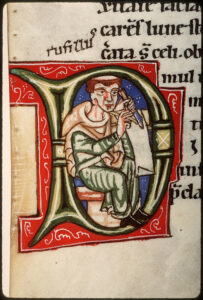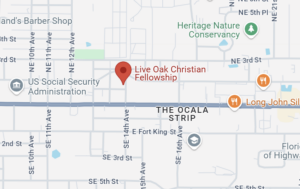Medieval European Calligraphy with Joon: Bâtarde
In this workshop we will be learning the Bâtarde hand. Also known as cursiva bastarda or lettre bâtarde (bastard), indicating its mixed parentage of formal black letter and casual cursive script. The medieval form of ronde, coulee and batarde was in use from the 9th century CE, reaching the height of its popularity in 14th and 15th century France and Germany.
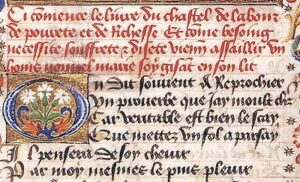 In 1633 the French parliament limited the number of official writing styles to only three, Ronde, Bâtarde, and Procédurale. Bâtarde developed into a form of French cursive roundhand. In Germany Bâtarde developed into the very different national script, Fraktur.
In 1633 the French parliament limited the number of official writing styles to only three, Ronde, Bâtarde, and Procédurale. Bâtarde developed into a form of French cursive roundhand. In Germany Bâtarde developed into the very different national script, Fraktur.
The medieval Bâtarde is a wonderful script for the scribe to learn. The combination of vertical and curved lines gives the style a flowing dynamism, and the letter forms can often be more legible to contemporary audiences than some other blackletter hands. As with all medieval styles, there is a range of historical variability, which allows each calligrapher to make it their own.
Materials
I will be supplying paper, including faux vellum, ink and a variety of writing implements.
If you have favorite writing tools, please bring them. Your own pens or plumes will be much more adapated to your hand than anything I can supply.
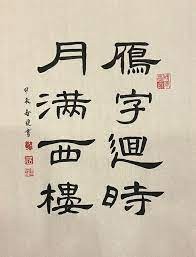 Chinese Calligraphy with Joon: Clerical Script
Chinese Calligraphy with Joon: Clerical Script
In this workshop we will be writing Chinese characters with brush and ink on handmade paper. The script we will be using is one of the six major styles of Chinese calligraphy
Chinese Clerical Script – 隸書 lì shū – reflects a major technological change in writing. Earlier forms were carved or engraved into bone or bamboo. During the Qin and Han Dynasties (c. 200 BCE to 200 CE) it became common to write with brush and ink on bamboo, silk and paper. The forms of the Clerical script utilize the abilities of the brush to create flowing strokes that vary dramatically in thickness. Clerical script developed over time to feature refined lines and an elegant aesthetic. This script was in use for hundreds of years and is still a much admired style.
Chinese characters have historically been used to write Korean, Japanese and Vietnamese, as well as Chinese, and influencing the aesthetics of a great many other writing systems in Asia.
During this workshop you will learn how to use a Chinese calligraphy brush, learn all the essential calligraphy strokes, and understand the structure of Chinese characters. We will practice a few poetic phrases so you will have a completed project to take home.
All materials are provided.
Optional: if you already have any Chinese calligraphy supplies, such as an inkstone, inkstick, paper or brushes, you are welcome to bring them. Note that for this workshop we will be using pre-ground liquid ink.
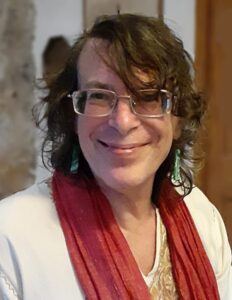
Joon Thomas (they/them)
About Joon Thomas of Palmstone Studio
I have been in love with pen and ink for most of my life. The first calligraphy I learned was the Arabic script, writing out lines of Persian poetry in elementary school. Our teacher would walk around the class and cut a nib on each student’s reed pen and write out a line of poetry at the top of a notebook page. We would lean over our pages, copying the words over and over again. My, what a mess of indelible blots we made with those reed pens dipped in bottles of ink! I still use dip pens, both reeds and metal pens with reservoirs. I also love using Chinese brushes, thin strips of flexible wood veneer, or even my fingers!
Calligraphy Specialties
I specialize in world calligraphy including most of the major scripts in use in the world today as well as many historical scripts, styles and variants. As a calligrapher I bring together the skills of an artist, artisan, graphic designer, linguist, and historian.
Illustration and Illumination
Many of my larger calligraphy works include elaborate border designs, illumination and watercolour illustration. I create original border designs in the tradition of manuscripts and miniature paintings from the Middle East, Europe and India.
Painting, Printmaking, Book Arts and More
I hold degrees in history with a focus on Chinese history and fine arts, with a focus on printmaking and the book arts, and brush painting.
I am a founding member of Sweetwater Print Cooperative in Gainesville, and serve on the faculty of the Academy for Five Element Acupuncture where I teach calligraphy, qigong and Chinese history.
